-
EXECUTIVE SUMMARY
-
MARKET INTRODUCTION
-
Definition
-
Scope of the Study
- Research Objective
- Assumptions
- Limitations
-
RESEARCH METHODOLOGY
-
Overview
-
Data Mining
-
Secondary Research
-
Primary Research
- Primary Interviews and Information Gathering Process
- Breakdown of Primary Respondents
-
ForecastingTechniques
-
Market Size Estimation
- Bottom-Up Approach
- Top-Down Approach
-
Data Triangulation
-
Validation
-
MARKET DYNAMICS
-
Overview
-
Drivers
-
Restraints
-
Opportunities
-
MARKET FACTOR ANALYSIS
-
Porter’s Five Forces Analysis
- Bargaining Power of Suppliers
- Bargaining Power of Buyers
- Threat of New Entrants
- Threat of Substitutes
- Intensity of Rivalry
-
Value Chain Analysis
-
COVID-19 Impact Analysis
- Market Impact Analysis
- Impact on Supply Chain
- Regional Impact
- Opportunity and Threat Analysis
-
GLOBAL CATHETER SECUREMENT DEVICE MARKET, BY PRODUCT TYPE
-
Overview
-
Arterial
-
Market Estimates & Forecast, by Region, 2018–2027
-
Market Estimates & Forecast, by Country, 2018–2027
-
Central Venous
- Peripherally Inserted Central Catheter (PICC)
-
Market Estimates & Forecast, by Region, 2018–2027
-
Market Estimates & Forecast, by Country, 2018–2027
-
Subclavian
-
Market Estimates & Forecast, by Region, 2018–2027
-
Market Estimates & Forecast, by Country, 2018–2027
-
Midlines
-
Market Estimates & Forecast, by Region, 2018–2027
-
Market Estimates & Forecast, by Country, 2018–2027
-
Femoral
-
Market Estimates & Forecast, by Region, 2018–2027
-
Market Estimates & Forecast, by Country, 2018–2027
-
Portal
-
Market Estimates & Forecast, by Region, 2018–2027
-
Market Estimates & Forecast, by Country, 2018–2027
-
Jugular
-
Market Estimates & Forecast, by Region, 2018–2027
-
Market Estimates & Forecast, by Country, 2018–2027
-
Peripheral
- Foley
-
Market Estimates & Forecast, by Region, 2018–2027
-
Market Estimates & Forecast, by Country, 2018–2027
-
Nasogastric Tube
-
Market Estimates & Forecast, by Region, 2018–2027
-
Market Estimates & Forecast, by Country, 2018–2027
-
Endotracheal Tube
-
Market Estimates & Forecast, by Region, 2018–2027
-
Market Estimates & Forecast, by Country, 2018–2027
-
Ventriculoperitoneal
-
Market Estimates & Forecast, by Region, 2018–2027
-
Market Estimates & Forecast, by Country, 2018–2027
-
Continuous Nerve Block
-
Market Estimates & Forecast, by Region, 2018–2027
-
Market Estimates & Forecast, by Country, 2018–2027
-
Chest Drainage Tube
-
Market Estimates & Forecast, by Region, 2018–2027
-
Market Estimates & Forecast, by Country, 2018–2027
-
Abdominal Drainage Tubes
- Percutaneous Endoscopic Gastrostomy
-
Market Estimates & Forecast, by Region, 2018–2027
-
Market Estimates & Forecast, by Country, 2018–2027
-
Jejunal
-
Market Estimates & Forecast, by Region, 2018–2027
-
Market Estimates & Forecast, by Country, 2018–2027
-
Umbilical
-
Market Estimates & Forecast, by Region, 2018–2027
-
Market Estimates & Forecast, by Country, 2018–2027
-
Epidural
-
Market Estimates & Forecast, by Region, 2018–2027
-
Market Estimates & Forecast, by Country, 2018–2027
-
All-Site Securement Devices
-
Market Estimates & Forecast, by Region, 2018–2027
-
Market Estimates & Forecast, by Country, 2018–2027
-
GLOBAL CATHETER SECUREMENT DEVICE MARKET, BY APPLICATION
-
Overview
-
Cardiovascular
-
Market Estimates & Forecast, by Region, 2018–2027
-
Market Estimates & Forecast, by Country, 2018–2027
-
Radiology
-
Market Estimates & Forecast, by Region, 2018–2027
-
Market Estimates & Forecast, by Country, 2018–2027
-
General Surgery
-
Market Estimates & Forecast, by Region, 2018–2027
-
Market Estimates & Forecast, by Country, 2018–2027
-
Urological
-
Market Estimates & Forecast, by Region, 2018–2027
-
Market Estimates & Forecast, by Country, 2018–2027
-
Respiratory
-
Market Estimates & Forecast, by Region, 2018–2027
-
Market Estimates & Forecast, by Country, 2018–2027
-
Gastric and Oropharyngeal
-
Market Estimates & Forecast, by Region, 2018–2027
-
Market Estimates & Forecast, by Country, 2018–2027
-
GLOBAL CATHETER SECUREMENT DEVICE MARKET, BY END USER
-
Overview
-
Hospitals & Clinics
-
Market Estimates & Forecast, by Region, 2018–2027
-
Market Estimates & Forecast, by Country, 2018–2027
-
Home Healthcare
-
Market Estimates & Forecast, by Region, 2018–2027
-
Market Estimates & Forecast, by Country, 2018–2027
-
Diagnostic Centers
-
Market Estimates & Forecast, by Region, 2018–2027
-
Market Estimates & Forecast, by Country, 2018–2027
-
GLOBAL CATHETER SECUREMENT DEVICE MARKET, BY REGION
-
Overview
-
North America
- US
- Canada
-
Europe
- Germany
- France
- Italy
- Spain
- UK
- Rest of Europe
-
Asia-Pacific
- Japan
- China
- India
- Australia
- South Korea
- Rest of Asia-Pacific
-
Rest of the World
- Middle East
- Africa
- Latin America
-
COMPANY LANDSCAPE
-
Overview
-
Competitive Analysis
-
Market Share Analysis
-
Major Growth Strategy in the Global Catheter Securement Device Market
-
Competitive Benchmarking
-
Leading Players in terms of Number of Developments in the Global Catheter Securement Device Market
-
Key developments and Growth Strategies
- New ProductLaunch/Service Deployment
- Merger &Acquisition
- Joint Venture
-
Major Players Financial Matrix
- Sales & Operating Income, 2020
- Major Players R&D Expenditure, 2020
-
COMPANY PROFILES
-
3M Company
- Company Overview
- Key Financials
- Products Offered
- Key Developments
- SWOT Analysis
- Key Strategies
-
B. Braun Melsungen AG
- Company Overview
- Key Financials
- Products Offered
- Key Developments
- SWOT Analysis
- Key Strategies
-
Baxter International, Inc.
- Company Overview
- Key Financials
- Products Offered
- Key Developments
- SWOT Analysis
- Key Strategies
-
C.R. Bard, Inc.
- Company Overview
- Key Financials
- Products Offered
- Key Developments
- SWOT Analysis
- Key Strategies
-
Centurion Medical Products
- Company Overview
- Key Financials
- Products Offered
- Key Developments
- SWOT Analysis
- Key Strategies
-
ConvaTec Group plc
- Company Overview
- Key Financials
- Products Offered
- Key Developments
- SWOT Analysis
- Key Strategies
-
Merit Medical Systems, Inc.
- Company Overview
- Key Financials
- Products Offered
- Key Developments
- SWOT Analysis
- Key Strategies
-
Smiths Medical
- Company Overview
- Key Financials
- Products Offered
- Key Developments
- SWOT Analysis
- Key Strategies
-
TIDI Products, LLC
- Company Overview
- Key Financials
- Products Offered
- Key Developments
- SWOT Analysis
- Key Strategies
-
M.C. Johnson Company, Inc.
- Company Overview
- Key Financials
- Products Offered
- Key Developments
- SWOT Analysis
- Key Strategies
-
DeRoyal Industries, Inc.
- Company Overview
- Key Financials
- Products Offered
- Key Developments
- SWOT Analysis
- Key Strategies
-
Cardinal Health
- Company Overview
- Key Financials
- Products Offered
- Key Developments
- SWOT Analysis
- Key Strategies
-
BioDerm Inc.
- Company Overview
- Key Financials
- Products Offered
- Key Developments
- SWOT Analysis
- Key Strategies
-
Starboard Medical, Inc.
- Company Overview
- Key Financials
- Products Offered
- Key Developments
- SWOT Analysis
- Key Strategies
-
Pepper Medical
- Company Overview
- Key Financials
- Products Offered
- Key Developments
- SWOT Analysis
- Key Strategies
-
APPENDIX
-
References
-
Related Reports
-
LIST OF TABLES
-
GLOBAL CATHETER SECUREMENT DEVICE MARKET SYNOPSIS, 2018–2027
-
GLOBAL CATHETER SECUREMENT DEVICE MARKET ESTIMATES & FORECAST, 2018–2027 (USD MILLION)
-
GLOBAL CATHETER SECUREMENT DEVICE MARKET,BY PRODUCT TYPE,2018–2027 (USD MILLION)
-
GLOBAL CATHETER SECUREMENT DEVICE MARKET,BY APPLICATION, 2018–2027 (USD MILLION)
-
GLOBAL CATHETER SECUREMENT DEVICE MARKET,BY END USER, 2018–2027 (USD MILLION)
-
NORTH AMERICA: CATHETER SECUREMENT DEVICE MARKET, BY COUNTRY, 2018–2027 (USD MILLION)
-
NORTH AMERICA:CATHETER SECUREMENT DEVICE MARKET, BY PRODUCT TYPE, 2018–2027 (USD MILLION)
-
NORTH AMERICA:CATHETER SECUREMENT DEVICE MARKET, BY APPLICATION, 2018–2027 (USD MILLION)
-
NORTH AMERICA: CATHETER SECUREMENT DEVICE MARKET, BY END USER, 2018–2027 (USD MILLION)
-
US:CATHETER SECUREMENT DEVICE MARKET,BY PRODUCT TYPE,2018–2027 (USD MILLION)
-
US:CATHETER SECUREMENT DEVICE MARKET,BY APPLICATION, 2018–2027 (USD MILLION)
-
US: CATHETER SECUREMENT DEVICE MARKET,BY END USER, 2018–2027 (USD MILLION)
-
CANADA:CATHETER SECUREMENT DEVICE MARKET,BY PRODUCT TYPE,2018–2027 (USD MILLION)
-
CANADA:CATHETER SECUREMENT DEVICE MARKET,BY APPLICATION, 2018–2027 (USD MILLION)
-
CANADA: CATHETER SECUREMENT DEVICE MARKET,BY END USER, 2018–2027 (USD MILLION)
-
EUROPE: CATHETER SECUREMENT DEVICE MARKET,BY COUNTRY, 2018–2027 (USD MILLION)
-
EUROPE: CATHETER SECUREMENT DEVICE MARKET,BY PRODUCT TYPE,2018–2027 (USD MILLION)
-
EUROPE: CATHETER SECUREMENT DEVICE MARKET,BY APPLICATION, 2018–2027 (USD MILLION)
-
EUROPE: CATHETER SECUREMENT DEVICE MARKET,BY END USER, 2018–2027 (USD MILLION)
-
GERMANY: CATHETER SECUREMENT DEVICE MARKET,BY PRODUCT TYPE,2018–2027 (USD MILLION)
-
GERMANY: CATHETER SECUREMENT DEVICE MARKET,BY APPLICATION, 2018–2027 (USD MILLION)
-
GERMANY: CATHETER SECUREMENT DEVICE MARKET,BY END USER, 2018–2027 (USD MILLION)
-
FRANCE: CATHETER SECUREMENT DEVICE MARKET,BY PRODUCT TYPE,2018–2027 (USD MILLION)
-
FRANCE: CATHETER SECUREMENT DEVICE MARKET,BY APPLICATION, 2018–2027 (USD MILLION)
-
FRANCE: CATHETER SECUREMENT DEVICE MARKET,BY END USER, 2018–2027 (USD MILLION)
-
ITALY: CATHETER SECUREMENT DEVICE MARKET,BY PRODUCT TYPE,2018–2027 (USD MILLION)
-
ITALY: CATHETER SECUREMENT DEVICE MARKET,BY APPLICATION, 2018–2027 (USD MILLION)
-
ITALY: CATHETER SECUREMENT DEVICE MARKET,BY END USER, 2018–2027 (USD MILLION)
-
SPAIN: CATHETER SECUREMENT DEVICE MARKET,BY PRODUCT TYPE,2018–2027 (USD MILLION)
-
SPAIN: CATHETER SECUREMENT DEVICE MARKET,BY APPLICATION, 2018–2027 (USD MILLION)
-
SPAIN: CATHETER SECUREMENT DEVICE MARKET,BY END USER, 2018–2027 (USD MILLION)
-
UK: CATHETER SECUREMENT DEVICE MARKET,BY PRODUCT TYPE,2018–2027 (USD MILLION)
-
UK: CATHETER SECUREMENT DEVICE MARKET,BY APPLICATION, 2018–2027 (USD MILLION)
-
UK: CATHETER SECUREMENT DEVICE MARKET,BY END USER, 2018–2027 (USD MILLION)
-
REST OF EUROPE: CATHETER SECUREMENT DEVICE MARKET,BY PRODUCT TYPE,2018–2027 (USD MILLION)
-
REST OF EUROPE: CATHETER SECUREMENT DEVICE MARKET,BY APPLICATION, 2018–2027 (USD MILLION)
-
REST OF EUROPE: CATHETER SECUREMENT DEVICE MARKET,BY END USER, 2018–2027 (USD MILLION)
-
ASIA-PACIFIC: CATHETER SECUREMENT DEVICE MARKET,BY COUNTRY, 2018–2027 (USD MILLION)
-
ASIA-PACIFIC: CATHETER SECUREMENT DEVICE MARKET,BY PRODUCT TYPE,2018–2027 (USD MILLION)
-
ASIA-PACIFIC: CATHETER SECUREMENT DEVICE MARKET,BY APPLICATION, 2018–2027 (USD MILLION)
-
ASIA-PACIFIC: CATHETER SECUREMENT DEVICE MARKET,BY END USER, 2018–2027 (USD MILLION)
-
JAPAN: CATHETER SECUREMENT DEVICE MARKET,BY PRODUCT TYPE,2018–2027 (USD MILLION)
-
JAPAN: CATHETER SECUREMENT DEVICE MARKET,BY APPLICATION, 2018–2027 (USD MILLION)
-
JAPAN: CATHETER SECUREMENT DEVICE MARKET,BY END USER, 2018–2027 (USD MILLION)
-
CHINA: CATHETER SECUREMENT DEVICE MARKET,BY PRODUCT TYPE,2018–2027 (USD MILLION)
-
CHINA: CATHETER SECUREMENT DEVICE MARKET,BY APPLICATION, 2018–2027 (USD MILLION)
-
CHINA: CATHETER SECUREMENT DEVICE MARKET,BY END USER, 2018–2027 (USD MILLION)
-
INDIA: CATHETER SECUREMENT DEVICE MARKET,BY PRODUCT TYPE,2018–2027 (USD MILLION)
-
INDIA: CATHETER SECUREMENT DEVICE MARKET,BY APPLICATION, 2018–2027 (USD MILLION)
-
INDIA: CATHETER SECUREMENT DEVICE MARKET,BY END USER, 2018–2027 (USD MILLION)
-
AUSTRALIA: CATHETER SECUREMENT DEVICE MARKET,BY PRODUCT TYPE,2018–2027 (USD MILLION)
-
AUSTRALIA: CATHETER SECUREMENT DEVICE MARKET,BY APPLICATION, 2018–2027 (USD MILLION)
-
AUSTRALIA: CATHETER SECUREMENT DEVICE MARKET,BY END USER, 2018–2027 (USD MILLION)
-
SOUTH KOREA: CATHETER SECUREMENT DEVICE MARKET,BY PRODUCT TYPE,2018–2027 (USD MILLION)
-
SOUTH KOREA: CATHETER SECUREMENT DEVICE MARKET,BY APPLICATION, 2018–2027 (USD MILLION)
-
SOUTH KOREA: CATHETER SECUREMENT DEVICE MARKET,BY END USER, 2018–2027 (USD MILLION)
-
REST OF ASIA-PACIFIC: CATHETER SECUREMENT DEVICE MARKET,BY PRODUCT TYPE,2018–2027 (USD MILLION)
-
REST OF ASIA-PACIFIC: CATHETER SECUREMENT DEVICE MARKET,BY APPLICATION, 2018–2027 (USD MILLION)
-
REST OF ASIA-PACIFIC: CATHETER SECUREMENT DEVICE MARKET,BY END USER, 2018–2027 (USD MILLION)
-
REST OF THE WORLD: CATHETER SECUREMENT DEVICE MARKET,BY REGION, 2018–2027 (USD MILLION)
-
REST OF THE WORLD: CATHETER SECUREMENT DEVICE MARKET,BY PRODUCT TYPE,2018–2027 (USD MILLION)
-
REST OF THE WORLD: CATHETER SECUREMENT DEVICE MARKET,BY APPLICATION, 2018–2027 (USD MILLION)
-
REST OF THE WORLD: CATHETER SECUREMENT DEVICE MARKET, BY END USER, 2018–2027 (USD MILLION)
-
MIDDLE EAST: CATHETER SECUREMENT DEVICE MARKET,BY PRODUCT TYPE, 2018–2027 (USD MILLION)
-
MIDDLE EAST: CATHETER SECUREMENT DEVICE MARKET,BY APPLICATION, 2018–2027 (USD MILLION)
-
MIDDLE EAST: CATHETER SECUREMENT DEVICE MARKET,BY END USER, 2018–2027 (USD MILLION)
-
AFRICA: CATHETER SECUREMENT DEVICE MARKET,BY PRODUCT TYPE,2018–2027 (USD MILLION)
-
AFRICA: CATHETER SECUREMENT DEVICE MARKET,BY APPLICATION, 2018–2027 (USD MILLION)
-
AFRICA: CATHETER SECUREMENT DEVICE MARKET,BY END USER, 2018–2027 (USD MILLION)
-
LATIN AMERICA: CATHETER SECUREMENT DEVICE MARKET,BY PRODUCT TYPE,2018–2027 (USD MILLION)
-
LATIN AMERICA: CATHETER SECUREMENT DEVICE MARKET,BY APPLICATION, 2018–2027 (USD MILLION)
-
LATIN AMERICA: CATHETER SECUREMENT DEVICE MARKET,BY END USER, 2018–2027 (USD MILLION)
-
LIST OF FIGURES
-
RESEARCH PROCESS
-
MARKET STRUCTURE FOR THE GLOBAL CATHETER SECUREMENT DEVICE MARKET
-
MARKET DYNAMICS FOR THE GLOBAL CATHETER SECUREMENT DEVICE MARKET
-
GLOBAL CATHETER SECUREMENT DEVICE MARKET SHARE, BY PRODUCT TYPE,2020(%)
-
GLOBAL CATHETER SECUREMENT DEVICE MARKET SHARE, BY APPLICATION, 2020 (%)
-
GLOBAL CATHETER SECUREMENT DEVICE MARKET SHARE, BY END USER, 2020(%)
-
GLOBAL CATHETER SECUREMENT DEVICE MARKET SHARE, BY REGION, 2020(%)
-
NORTH AMERICA: CATHETER SECUREMENT DEVICE MARKET SHARE, BY REGION, 2020(%)
-
EUROPE: CATHETER SECUREMENT DEVICE MARKET SHARE, BY REGION, 2020(%)
-
ASIA-PACIFIC: CATHETER SECUREMENT DEVICE MARKET SHARE, BY REGION, 2020(%)
-
REST OF THE WORLD: CATHETER SECUREMENT DEVICE MARKET SHARE, BY REGION, 2020(%)
-
GLOBAL CATHETER SECUREMENT DEVICE MARKET: COMPANY SHARE ANALYSIS, 2020(%)
-
3M COMPANY: FINANCIAL OVERVIEW
-
3M COMPANY: SWOT ANALYSIS
-
B. BRAUN MELSUNGEN AG:FINANCIAL OVERVIEW
-
B. BRAUN MELSUNGEN AG:SWOT ANALYSIS
-
BAXTER INTERNATIONAL, INC.:FINANCIAL OVERVIEW
-
BAXTER INTERNATIONAL, INC.:SWOT ANALYSIS
-
C.R. BARD, INC.:FINANCIAL OVERVIEW
-
C.R. BARD, INC.:SWOT ANALYSIS
-
CENTURION MEDICAL PRODUCTS:FINANCIAL OVERVIEW
-
CENTURION MEDICAL PRODUCTS:SWOT ANALYSIS
-
CONVATEC GROUP PLC:FINANCIAL OVERVIEW
-
CONVATEC GROUP PLC:SWOT ANALYSIS
-
MERIT MEDICAL SYSTEMS, INC.:FINANCIAL OVERVIEW
-
MERIT MEDICAL SYSTEMS, INC.:SWOT ANALYSIS
-
SMITHS MEDICAL: FINANCIAL OVERVIEW
-
SMITHS MEDICAL: SWOT ANALYSIS
-
TIDI PRODUCTS, LLC: FINANCIAL OVERVIEW
-
TIDI PRODUCTS, LLC: SWOT ANALYSIS
-
M.C. JOHNSON COMPANY, INC.:FINANCIAL OVERVIEW
-
M.C. JOHNSON COMPANY, INC.:SWOT ANALYSIS
-
DEROYAL INDUSTRIES, INC.:FINANCIAL OVERVIEW
-
DEROYAL INDUSTRIES, INC.:SWOT ANALYSIS
-
CARDINAL HEALTH:FINANCIAL OVERVIEW
-
CARDINAL HEALTH:SWOT ANALYSIS
-
BIODERM INC.:FINANCIAL OVERVIEW
-
BIODERM INC.:SWOT ANALYSIS
-
STARBOARD MEDICAL, INC.:FINANCIAL OVERVIEW
-
STARBOARD MEDICAL, INC.:SWOT ANALYSIS
-
PEPPER MEDICAL:FINANCIAL OVERVIEW
-
PEPPER MEDICAL:SWOT ANALYSIS

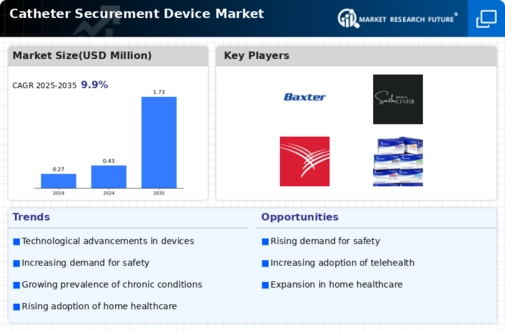

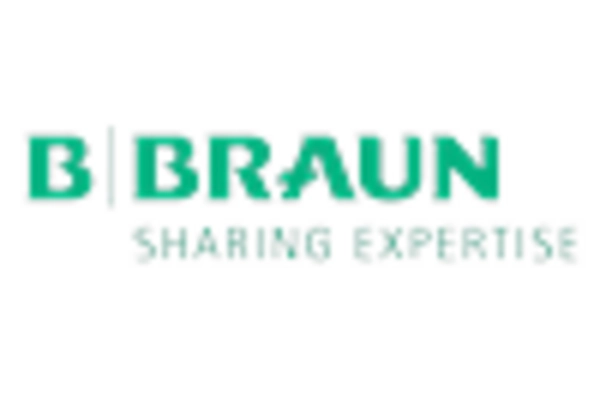

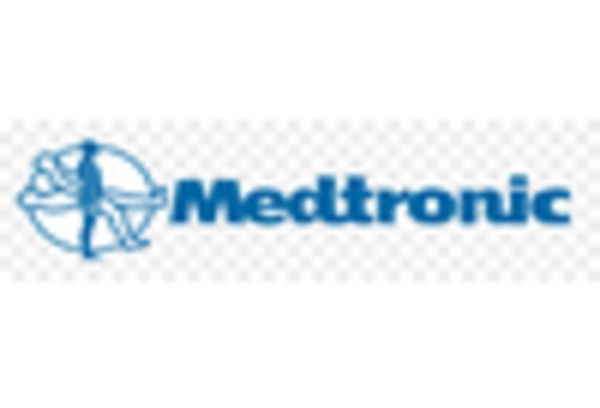
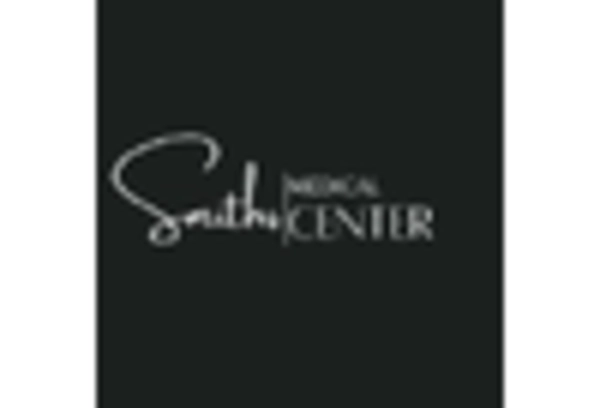
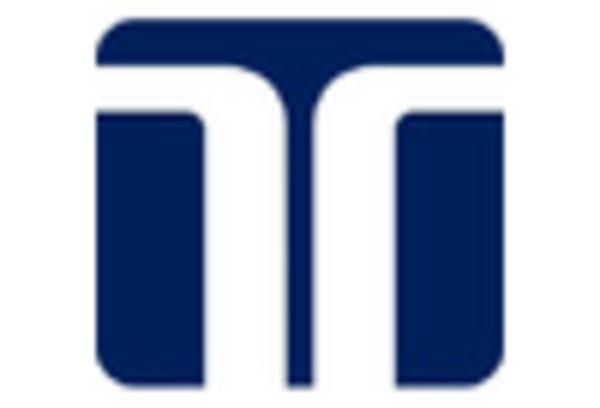









Leave a Comment